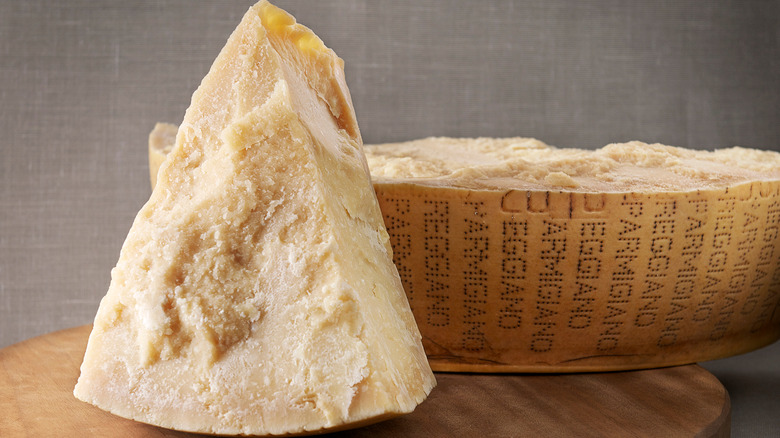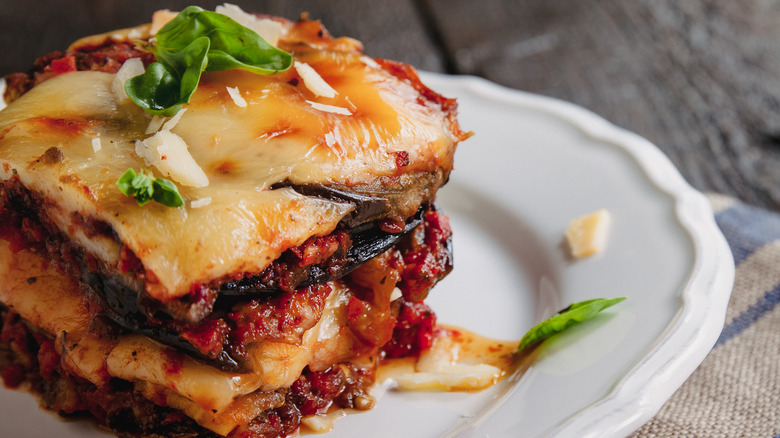Parmigiano-Reggiano Is Cheese, Parmesan Is Window Shutters
You might be thinking about the name of your favorite Italian dish all wrong. Ordering eggplant, veal, or chicken parmesan at your favorite Italian establishment might conjure thoughts of the classic cheese, Parmigiano-Reggiano, usually included by the handful in these recipes. This tasty ingredient, however, may actually be far less relevant to the dish than initially presumed. Despite the similarity in name, food historians and etymologists seem to agree that it's a linguistic coincidence as fitting as it is confounding.
The original parmesan dish, eggplant parmesan, or melanzane alla parmigiana in Italian, is prepared by baking or frying slices of the nightshade vegetable that have been dipped in an egg wash and coated in a parmesan bread crumb mixture. The golden-brown slices are then arranged in a baking dish and layered with mozzarella, marinara sauce, and yes, more parmesan cheese. It is a simple and delicious recipe, but it was not always so. The earliest versions of eggplant parmesan may have skipped the Parmigiano altogether, instead sprinkling the fried eggplant slices with pecorino cheese.
Parmigiano-Reggiano is named after the Italian city of Parma from which it hails. While some believe this means the dish hails from this region too, the truth is quite different. Though Parma is in northern Italy, eggplant parmesan originates in the kitchens of Campania and Sicily, both in the far south of Italy. Later, after the first waves of Italian immigration (primarily from the south) to America, the more recent versions including chicken and veal were born.
Tomayto, tomahto: Parmesan, Parmigiano
Given the name of the northern Italian cheese and the southern Italian eggplant dish it ended up in are wholly disconnected, where exactly did the word "parmesan" in this usage come from? While the prevailing theory involves window shutters, there are many theories about the provenance of this mysterious, suspiciously cheesy word. Make no mistake, the debate surrounding the etymology of this classic Italian food is far from settled.
The prevailing theory is that the word comes from the Sicilian word palmigiana, which refers to the traditional wooden slats of window shutters and thatched roofing that resemble the breaded eggplant slices arranged in the casserole. Through mispronunciation or confusion, this word could have morphed into its modern version. Another possibility, noted by Italian food author and historian Clifford Wright, is that the word came from the Sicilian damigiana, which could refer to the wicker basket used to hold the dangerously hot casserole dish. He also cites other Sicilian authors who argue that the original mystery word is parmiciana, the Sicilian word for Persian. Others argue it is petronciana, the original word for eggplant which is derived from Persian.
Wherever the name comes from, the dish is delicious as ever. Just remember the different histories of these similar-sounding foods next time you ask someone to pass the parm at your favorite Italian eatery.

